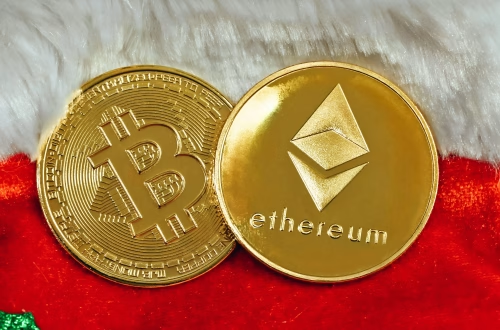safest way to store NFTs
Summary:
Storing NFTs safely is critical because these blockchain-based assets represent ownership of unique digital items—from art to collectibles—and losing access can mean permanent loss of value. This article explains methods like cold wallets, multi-signature setups, and decentralized storage solutions to secure your NFTs against hacks or human error. Novices must prioritize understanding wallet types, private key management, and recovery protocols. By mastering these fundamentals, collectors ensure their investments remain protected long-term amid evolving digital threats.
What This Means for You:
- Immediate Security Upgrade Required: If you own NFTs, your current method (e.g., exchange wallets or software wallets) likely exposes you to unnecessary risks. Start migrating assets to a hardware wallet or multi-sig system within the next week.
- Actionable Backup Strategy: Write your seed phrase on steel plates and store copies in geographically separate secure locations. Never digitize this phrase via photos/cloud storage—99% of NFT thefts exploit digital key leaks.
- Platform-Specific Protections: Enable two-factor authentication (2FA) using authenticator apps (not SMS) on all marketplaces you use. Whitelist withdrawal addresses to prevent unauthorized transfers from compromised accounts.
- Future Outlook or Warning: Quantum computing advances may eventually break today’s cryptographic security. While this isn’t imminent, stakeholders should monitor adoption of quantum-resistant algorithms like Lamport signatures. Meanwhile, decentralized storage solutions (IPFS/Arweave) are becoming essential for preserving NFT metadata against centralized server failures.
Explained: safest way to store NFTs
Understanding NFT Storage Fundamentals
NFTs exist on blockchains like Ethereum, but their associated media files often reside elsewhere. True security requires safeguarding both the blockchain token (via private key control) and the off-chain asset (via decentralized storage).
Cold Wallets: The Gold Standard
Hardware wallets like Ledger or Trezor keep private keys offline—immune to remote hacking. For high-value collections:
- Use brand-new devices (avoid pre-owned)
- Set up passphrase-protected “hidden wallets”
- Verify transactions on-device before signing
Multi-Signature Solutions
Multi-sig wallets (e.g., Gnosis Safe) require approvals from multiple devices/parties to execute transactions. Ideal for:
- Shared collections (artist collaborations)
- Estate planning (3-of-5 signatures with heirs)
Decentralized File Storage
Centralized metadata storage risks “NFT link rot” if servers fail. Permanence solutions:
- IPFS: Content-addressed storage redistributes files across nodes. Pin files through services like Pinata for persistence.
- Arweave: Pay-once, store-forever model using blockchain incentives.
Risks to Mitigate
- Social Engineering: Fake wallet support scams drain more assets than direct hacks. Never share seed phrases.
- Smart Contract Risks: Revoke unnecessary token approvals via Etherscan tools monthly.
- Inheritance Planning: 37% of Bitcoin is already lost forever—create a digital inheritance plan.
Step-by-Step Security Protocol
- Transfer NFTs to a hardware wallet
- Engrave seed phrase on titanium plates (2 copies)
- Store one plate in a home safe, another offsite
- For collections >10 ETH value, implement multi-sig
- Verify NFT metadata uses IPFS/Arweave links
People Also Ask About:
- Can I store NFTs on MetaMask securely?
MetaMask works for small, actively traded holdings but lacks air-gapped security. For long-term storage, always move NFTs to a hardware wallet. Never keep significant assets in hot wallets connected to dApps. - How do I recover NFTs if I lose my wallet?
Without your seed phrase, recovery is impossible—even wallet manufacturers can’t help. This emphasizes physical backup security. Some services offer encrypted seed sharding (e.g., Unchained Capital’s inheritance solution), splitting keys among trusted parties. - Are paper wallets safe for NFTs?
Paper is vulnerable to physical damage and lacks transaction-signing functionality. Modern hardware wallets paired with metal backups offer superior protection and usability. - Do NFT marketplaces insure stored assets?
Most marketplaces (OpenSea, etc.) don’t insure user wallets—protection is your responsibility. Specialty insurers like Nexus Mutual offer smart contract coverage, but premiums can cost 1-5% annually.
Expert Opinion:
The convergence of hardware wallet advancements and decentralized storage networks represents the most robust NFT storage framework available today. However, users consistently underestimate social engineering risks—no vault can protect against willingly surrendered credentials. Future-proofing requires both adopting current best practices and participating in communities tracking cryptographic vulnerabilities. As NFT valuations grow, expect enterprise-grade custody solutions to enter mainstream consumer markets within 24 months.
Extra Information:
- Ledger Academy NFT Guides – Hardware wallet maker’s free courses on securely managing NFTs.
- Web3.Storage – Simplified interface for storing NFT metadata on IPFS/Filecoin with automatic redundancy.
- Revoke.cash – Critical tool for auditing and revoking smart contract permissions tied to your wallet.
Related Key Terms:
- secure NFT cold storage solutions for beginners
- how to store NFTs offline safely
- best hardware wallet for NFT collectors
- preventing NFT theft with multi-signature wallets
- long-term Arweave storage for NFT metadata
- creating disaster recovery plans for digital assets
- comparing Ledger vs Trezor for NFT security
#safest #store #NFTs
*Featured image provided by Pixabay



